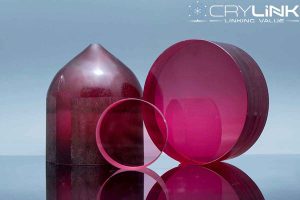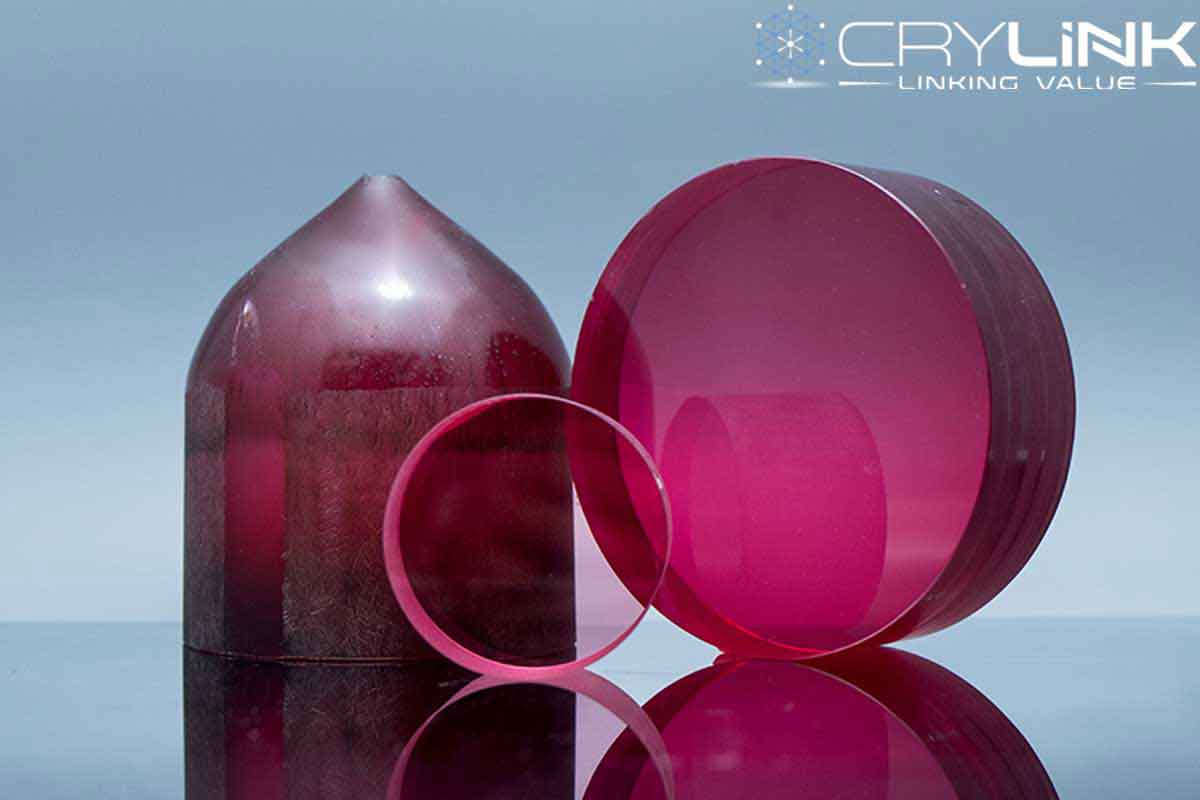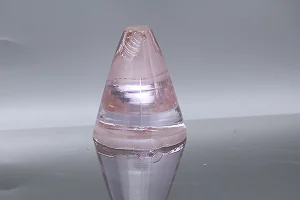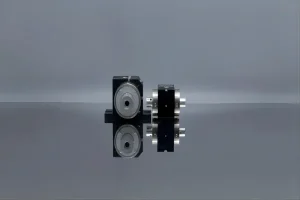Crystal Growth
Ti Sapphire crystals can be grown using various methods, including the Czochralski method, the edge-defined film-fed growth (EFG) method, and the heat exchanger method. The Czochralski method is the most widely used method for growing Ti Sapphire crystals due to its ability to produce large, high-quality crystals.
In the Czochralski method, a small seed crystal is placed in a crucible containing molten Al2O3 and TiO2. The crucible is then slowly rotated and pulled upward, allowing the crystal to grow from the molten mixture. The crystal’s size and quality depend on several factors, including the composition of the molten mixture, the rotation speed, and the pulling rate.
Physical Properties
Optical Properties
Ti Sapphire crystals exhibit a broad absorption spectrum ranging from ultraviolet to near-infrared, with a peak at around 490 nm. The absorption spectrum is characterized by several absorption bands, including the weak 3T1 → 3T2 band at around 475 nm and the strong 3T1 → 3T2 band at around 490, and the 3T1 → 3T2 band at around 650 nm.
The emission spectrum of Ti Sapphire crystals is centered around 800 nm, making them ideal gain media for high-power lasers. The long lifetime of Ti Sapphire crystals (3.2 μs) allows for efficient energy storage and amplification, making them suitable for high-power applications.
Thermal Properties
Ti Sapphire crystals have excellent thermal conductivity, which helps to dissipate the heat generated during laser operation. The thermal conductivity of Ti Sapphire is approximately 34 W/mK at 300 K, which is higher than most other laser gain media, including Nd: YAG and Nd: YVO4.
Mechanical Properties
Ti Sapphire crystals have a hardness of 9 on the Mohs scale, making them relatively resistant to scratching and abrasion. The fracture toughness of Ti Sapphire is also high, making it less prone to cracking and chipping during processing.
Refractive Index
The refractive index of Ti Sapphire is relatively high, with a value of 1.76 at 800 nm. The birefringence of Ti Sapphire is low, with a value of 0.008 at 800 nm.
Surface Properties
The surface properties of Ti Sapphire crystals are critical for their performance in laser applications. Surface defects, such as scratches, pits, and subsurface damage, can significantly impact the laser’s output power, beam quality, and lifetime.

The polishing process is essential in achieving optimal surface quality for Ti Sapphire crystals. The choice of polishing method, polishing parameters, and polishing tool can significantly impact the surface quality of the crystal.
Applications
Solid-State Lasers
Ti Sapphire crystals are widely used as gain media in solid-state lasers due to their broad absorption and emission spectra, long lifetime, and high thermal conductivity. They are used in a wide range of laser applications, including industrial cutting, drilling, welding, and medical and scientific research.
Femtosecond Lasers
Ti Sapphire crystals are an ideal gain medium for femtosecond lasers, which are ultrafast lasers that generate pulses with durations in the femtosecond range (10^-15 seconds). Femtosecond lasers are used in various applications, including micro- and nano-machining, biophotonics, and ultrafast spectroscopy.
Microscopy
Ti Sapphire crystals are used in various microscopy techniques, including confocal and two-photon microscopy. These techniques allow for high-resolution imaging of biological tissues and structures.
Medical Devices
Ti Sapphire crystals, including ophthalmic and skin resurfacing lasers, are used in medical devices. They are also used in diagnostic applications, such as fluorescence spectroscopy and imaging.
Spectroscopy
Ti Sapphire crystals are used in various spectroscopic techniques, including Raman spectroscopy, Fourier transforms infrared spectroscopy (FTIR), and fluorescence spectroscopy. These techniques are used in various applications, including material analysis, environmental monitoring, and chemical analysis.
Conclusion
In conclusion, Ti Sapphire crystals are a versatile material with many applications in lasers, microscopy, medical devices, and spectroscopy. The crystal’s quality is critical for its performance, and the polishing process is an essential step in achieving optimal surface quality. The physical and optical properties of Ti Sapphire crystals, including their broad absorption and emission spectra, long lifetime, and high thermal conductivity, make them ideal gain media for high-power lasers and femtosecond lasers.








